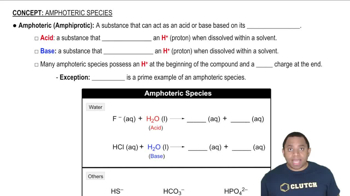Here are the essential concepts you must grasp in order to answer the question correctly.
Equilibrium Expression
An equilibrium expression is a mathematical representation of the relationship between the concentrations of reactants and products at equilibrium for a reversible chemical reaction. It is formulated using the law of mass action, where the concentration of products is raised to the power of their coefficients and divided by the concentration of reactants raised to their coefficients. Solids and liquids are excluded from the expression since their activities are considered constant.
Recommended video:
Equilibrium Constant Expressions
Activity of Solids and Liquids
In the context of equilibrium expressions, the activity of solids and liquids is defined as 1, meaning they do not appear in the equilibrium constant expression. This is because their concentrations do not change during the reaction, as they are in a pure state. Therefore, only aqueous and gaseous species are included in the equilibrium expression, reflecting their variable concentrations.
Recommended video:
Aqueous and Gaseous Species
Aqueous (aq) species are substances dissolved in water, while gaseous (g) species are in the form of gas. In equilibrium expressions, the concentrations of these species are crucial as they directly influence the position of equilibrium. The presence of these species in the reaction allows for the calculation of the equilibrium constant, which indicates the extent of the reaction and the relative amounts of products and reactants at equilibrium.
Recommended video:
 Verified step by step guidance
Verified step by step guidance

